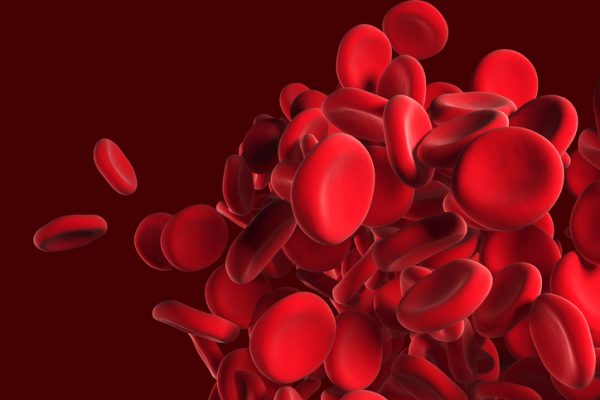
Novo Nordisk is paying $240 million for global rights to a Phase 3-ready drug from Omeros that could rival immune disorder medications currently available from companies such as AstraZeneca, Novartis, and Apellis Pharmaceuticals.
The deal brings to Novo Nordisk zaltenibart, an Omeros drug known in earlier stages of development as OMS906. Early this year, Seattle-based Omeros began preparations for pivotal clinical tests of the drug in paroxysmal nocturnal hemoglobinuria (PNH), a rare blood disorder. But in the spring, Omeros implemented what it told investors was a temporary pause until it secured the capital to fund the studies.
The agreement announced Wednesday provides Omeros cash to support the rest of its pipeline, which has another drug currently under regulatory review. Meanwhile, Novo Nordisk gains an asset that gives it a chance to compete among therapies that address the complement system, a part of the immune system.
There are three pathways of the complement system. Zaltenibart is an antibody designed to inhibit MASP-3, a protein that activates what’s called the alternative pathway. Omeros believes blocking MASP-3 has potential applications in many diseases associated with excessive activation of this pathway. One of them is PNH, in which the complement system mistakenly attacks and destroys red blood cells, leaving patients with low levels of healthy red blood cells among other complications. In Phase 2 testing in PNH, Omeros reported zaltenibart led to statistically significant and clinically meaningful improvement on measures of the destruction of these cells. The study drug has been safe and well tolerated in clinical testing to date.
Complement inhibitors are already the standard treatment for PNH, mainly the blockbuster AstraZeneca drugs Soliris and Ultomiris. Both are antibodies designed to block a complement protein called C5. Apellis Pharmaceuticals’ peptide drug Empaveli treats PNH by blocking the complement protein C3. Novartis’s Fabhalta, an oral small molecule designed to block the complement protein factor B, offers yet another approach for treating PNH.
Omeros’s Phase 2 test of zaltenibart included some PNH patients who did not have an adequate response to AstraZeneca’s Ultomiris. These participants received zaltenibart in addition to Ultomiris. Omeros reported that patients who received this drug combination achieved statistically significant and clinically meaningful improvement in hemoglobin levels and measures of immature red blood cells in circulation. A sustained response was observed through week 24, the last time point prior to an interim analysis cutoff. These results were presented last year during the annual meeting of the American Society of Hematology.
Omeros was planning a Phase 3 program that would evaluate zaltenibart head to head against AstraZeneca’s C5 inhibitors with a goal of showing superiority against these drugs. In its annual report, Omeros said data from these studies could form the basis of superiority claims “for promotion, enhanced market access, and pricing reflective of zaltenibart’s advantages.”
Besides PNH, Omeros was developing zaltenibart for complement 3 glomerulopathy (C3G), a disorder that develops when C3 protein buildup leads to kidney inflammation and damage. In March, Novartis’s Fabhalta expanded its label to C3G, becoming the first FDA-approved therapy for this rare kidney condition. Apellis’s Empaveli added C3G to its label in July. Novo Nordisk said it plans to start a global Phase 3 program for zaltenibart in PNH and explore use of the drug in other rare diseases.
“Zaltenibart has a novel mode of action that could offer several advantages over other treatments for complement-mediated diseases,” Martin Holst Lange, chief scientific officer and executive vice president of research & development at Novo Nordisk, said in the pharma giant’s announcement of the deal. “Novo Nordisk is in a strong position to build on the work done by Omeros to maximize the value of this asset and develop zaltenibart into a differentiated and potentially best-in-class treatment approach for a number of rare blood and kidney disorders.”
Omeros has preclinical MASP-3 programs unrelated to zaltenibart and will retain rights to them. The biotech’s research also includes oral small molecule MASP-3 inhibitors. The agreement permits Omeros to develop and commercialize these assets “with limited indication restrictions.” The companies expect to close the transaction by the end of this year.
Per terms of the agreement, Novo Nordisk receives exclusive global rights to develop and commercialize zaltenibart in all indications. The financials of the deal break down to a $240 million cash payment upon deal closing and up to $510 million tied to development and approval milestones, according to an Omeros regulatory filing. Up to $1.3 billion more is tied to the achievement of sales-based milestones.
With Novo Nordisk taking over development of zaltenibart, Omeros can keep its focus on a narsoplimab, a MASP-2 inhibitor addressing the lectin pathway of the complement system. This antibody drug is currently under FDA and European Medicines Agency review for the treatment of hematopoietic stem cell transplant-associated thrombotic microangiopathy, a rare complication that can develop following a stem cell transplant procedure. Treatment options currently include complement inhibitors. An FDA decision for narsoplimab is expected by Dec. 26; the EMA is expected to render its verdict in mid-2026.
Illustration: virusowy, Getty Images










